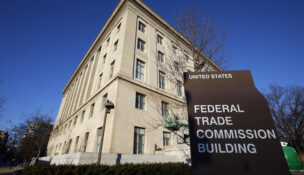Branch wars: Wild cards abound in circuit court races
By: Erika Strebel, [email protected]//April 4, 2016//
Branch wars: Wild cards abound in circuit court races
By: Erika Strebel, [email protected]//April 4, 2016//
With a hotly contested presidential primary and state Supreme Court race likely to bring people to the polls in droves for the state’s spring elections on Tuesday, many voters will find themselves asked to cast a ballot for a position they may have given comparatively little thought to: circuit-court judge.
Kevin Kennedy, a Wisconsin election official, said it’s almost always contests with statewide or nationwide implications that drive voter turnout. Circuit court races, although just as important as the others in many ways, rarely have the same sort of pull.
Because of the passions stirred by this year’s presidential primary, Kennedy has predicted around 40 percent of eligible voters statewide will turn out on Tuesday. If the forecast proves true, that would be the biggest turnout seen in one of Wisconsin’s spring election since 1980.
“If you’re running this year, you’ve got a bigger audience you’ve got to sell yourself to than you would next year,” said Kennedy.
And since heavy voting is fairly uncommon in circuit court elections, no one is quite certain what a high turnout would mean in this year’s contests.
In general, there are two main drivers of voter turnout in circuit court races. The first is having contested races. Understandably, voters tend to lose interest if they are being asked to do nothing beyond approving the re-election of an incumbent.
The second driver, meanwhile, is directly related to what’s happening on the state’s high court. Contested races at that level, particularly in recent years, have acted almost as a magnetic force on voters.
Kennedy said a hotly contested race for a seat on the high court’s bench can, on its own, bring out about 20 percent of all registered voters. Recent history has provided examples of even greater turnout.
When JoAnne Kloppenburg, an appellate judge who is running for the state Supreme Court again this year, tried to unseat Justice David Prosser in 2011, nearly 35 percent of eligible voters went to the polls. Making that election of particular interest was the fact that it was the first contest for the high court to take place after Gov. Scott Walker and Republican lawmakers had passed the state’s Act 10 law that curtailed most public workers’ collective-bargaining rights.
Yet, despite the recent interest in judicial elections, contests for circuit court seats remain something of a rarity. Of the 66 circuit court bench seats that are up for grabs throughout the state on Tuesday, only 10 are being vied for by more than one candidate.
Unlike contests for the Supreme Court, circuit court races rarely see huge amounts of spending by special-interest groups. One of the few exceptions to that rule came in 2013 when Judge Janet Protasiewicz, who was then Milwaukee County prosecutor, ran against current Justice Rebecca Bradley, who was then Walker’s appointee to Branch 45 and is now defending her Supreme Court seat against Kloppenburg.
“I don’t see that that outside money is coming in for any of them,” Protasiewicz said. “So all … of them are in a position, which I quite frankly think is a nice position to be in, where you can run your campaign or your terms and, you know, do your basic fundraising, do your basic campaign plan and not have to worry about that type of issue.”
Of the total 66 spots up for grabs in circuit courts around the states, only 10, including the two in Milwaukee County, are contested. Here are the eight other contested races:
Eau Claire County (Branch 1)
John Manydeeds
Judge Brian Wright (incumbent)
Iowa County
Margaret Koehler
Timothy McKinley
Kewaunee
Keith Mehn
Jeffrey Wisnicky
Portage County (Branch 2)
Trish Baker
Judge Robert Shannon (incumbent)
Racine County (Branch 4)
Mark Nielsen
Judge Joseph Seifert (incumbent)
Rusk County
Judge Steven Anderson (incumbent)
Richard Summerfield
Sauk County
Kevin Calkins
Wendy Klicko
Walworth
Daniel Johnson
Dan Necci
Milwaukee County is the only county in the state to have two contested races for circuit-court seats in the spring election. Candidates are vying for open positions on branches 45 and 31. Quite possibly adding to their interest, both races also feature incumbent candidates who were appointed by Walker to the seats they are now seeking re-election to.
It remains to be seen whether the connection with Walker, whose approval rating has fallen just shy of 40 percent in recent polls conducted by Marquette University, will prove a hindrance or a benefit. Similar questions hang over the contest for the Supreme Court, to which Walker appointed Bradley in October.
In Milwaukee County, Judge Michelle Ackerman Havas, whom Walker appointed to the Branch 45 seat in August, is running against private attorney Jean Kies.
The other Walker appointee up for re-election next week is Judge Paul Riflej, who was put on the Branch 31 in December. Rifelj’s opponent is Hannah Dugan, also an attorney.
Kennedy said former prosecutors are often more successful running to become judge because they tend to have more time before the public than private lawyers.
However, Judge Protasiewicz said, such generalizations may not apply to Milwaukee County. The county’s district attorney’s office has about 130 prosecutors, a crowd that can be hard for candidates to distinguish themselves from. Although Protasiewicz herself had worked as a prosecutor for 25 years before running for her current position, she said she thinks most people knew her more from her work in the community.
Circuit court races differentiate themselves from other electoral contests in another way: They tend to be less political.
“You’re voting on a person’s qualifications rather than on someone’s platform,” Kennedy said.
In a recent survey of local lawyers, the Milwaukee Bar Association found that the general perception is that this year’s circuit court candidates are qualified for the positions they are seeking. The results showed Dugan being ranked as “qualified” by 155 members, just one more than the 154 who gave Rifelj the same designation.
A wider difference was seen, though, among the respondents who instead chose to deem the candidates as “not qualified.” Nineteen State Bar members gave Rifelj that designation, whereas 58 gave it to Dugan.
The margins were similarly close between Havas and Kies. Havas received 145 votes for being qualified and Kies received 121. Twenty-five lawyers, in contrast, rated Havas as unqualified and 31 rated Kies as unqualified.
Protasiewicz said the candidates seem to be campaigning hard, whether their goal be to retain a seat or to replace an incumbent.
“I think these are going to be really interesting races,” Protasiewicz said. “I suspect voter turnout may impact the circuit court races. I’m not quite sure how at this point, but I would suspect there would be some impact.”
Legal News
- Iranian nationals charged cyber campaign targeting U.S. Companies
- Wisconsin court issues arrest warrant ‘in error’ for Minocqua Brewing owner
- Chicago man sentenced to prison after being caught with ‘Trump Gun’
- FTC bans non-competes
- Gov. Evers seeks applicants for Dane County Circuit Court
- Milwaukee man charged in dismemberment death pleads not guilty
- Democratic-led states lead ban on the book ban
- UW Madison Professor: America’s child care crisis is holding back moms without college degrees
- History made in Trump New York trial opening statements
- Prosecutor won’t bring charges against Wisconsin lawmaker over fundraising scheme
- Republican Wisconsin Senate candidate says he doesn’t oppose elderly people voting
- Vice President Harris to reveal final rules mandating minimum standards for nursing home staffing
WLJ People
- Power 30 Personal Injury Attorneys – Russell Nicolet
- Power 30 Personal Injury Attorneys – Benjamin Nicolet
- Power 30 Personal Injury Attorneys – Dustin T. Woehl
- Power 30 Personal Injury Attorneys – Katherine Metzger
- Power 30 Personal Injury Attorneys – Joseph Ryan
- Power 30 Personal Injury Attorneys – James M. Ryan
- Power 30 Personal Injury Attorneys – Dana Wachs
- Power 30 Personal Injury Attorneys – Mark L. Thomsen
- Power 30 Personal Injury Attorneys – Matthew Lein
- Power 30 Personal Injury Attorneys – Jeffrey A. Pitman
- Power 30 Personal Injury Attorneys – William Pemberton
- Power 30 Personal Injury Attorneys – Howard S. Sicula











